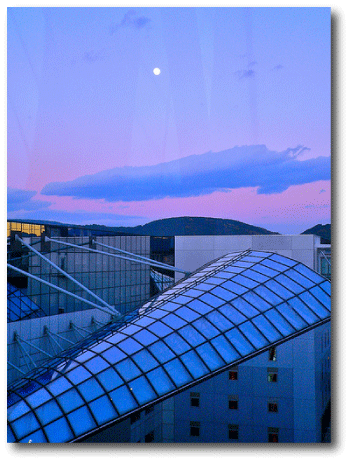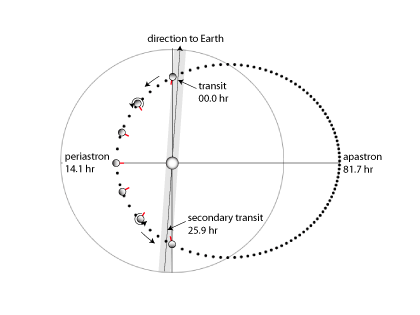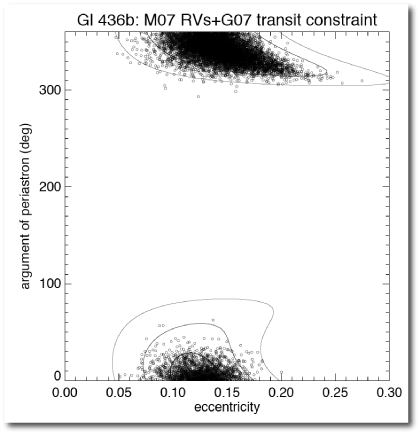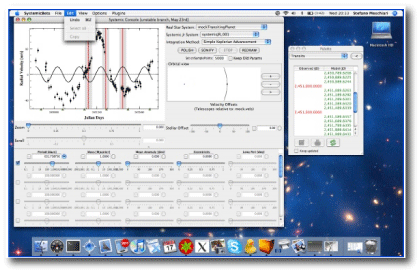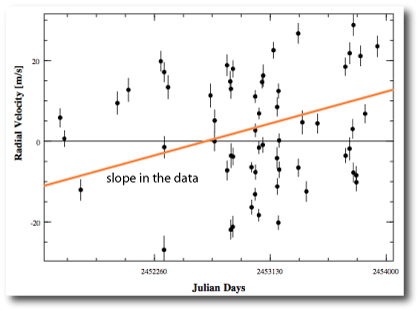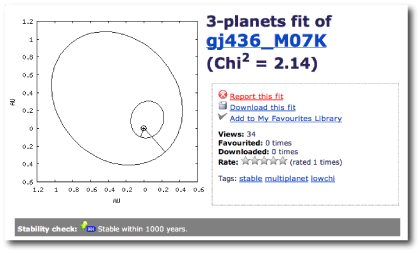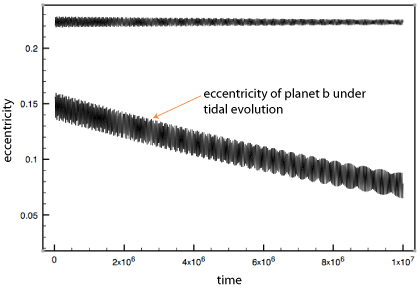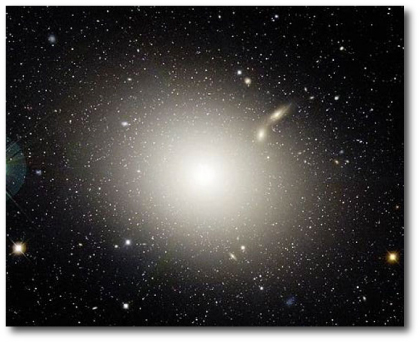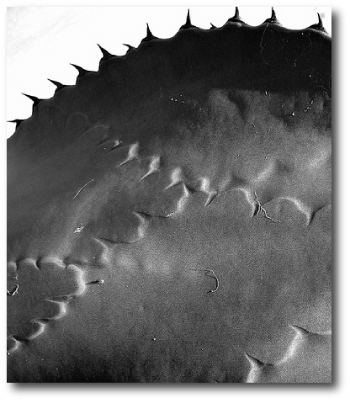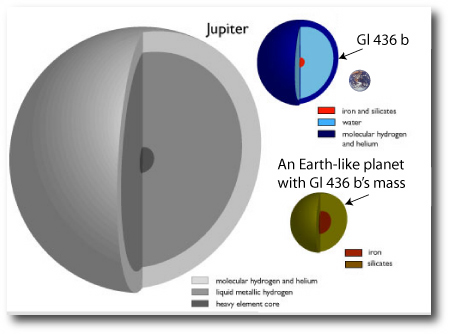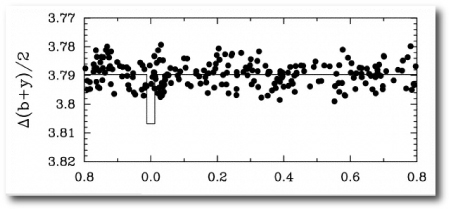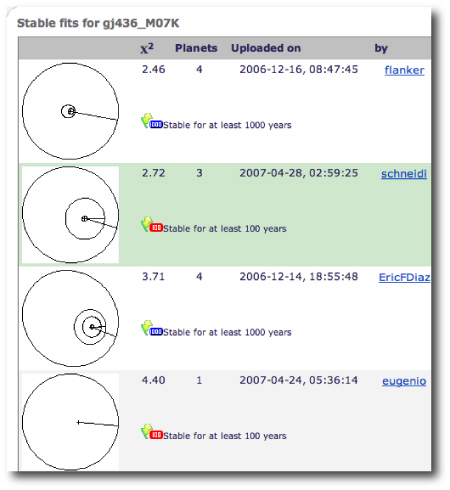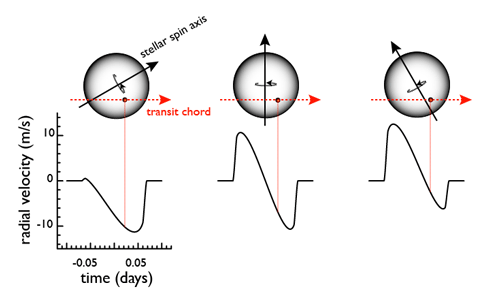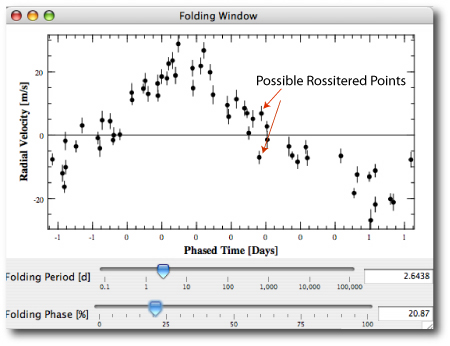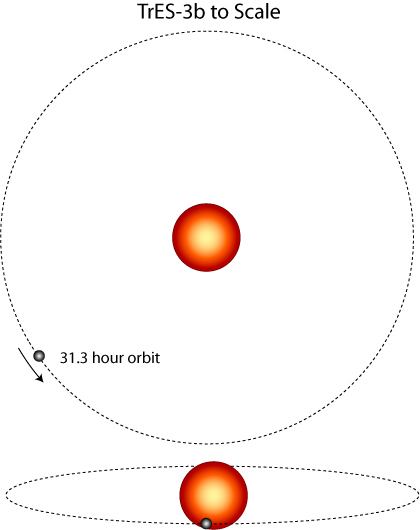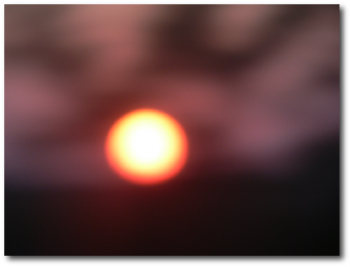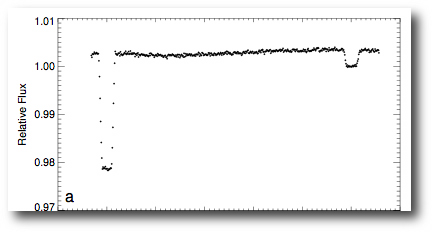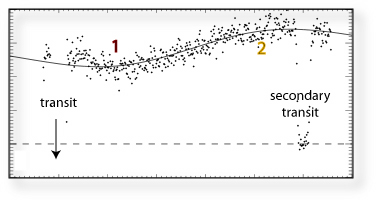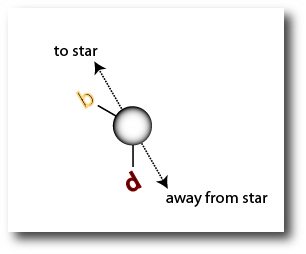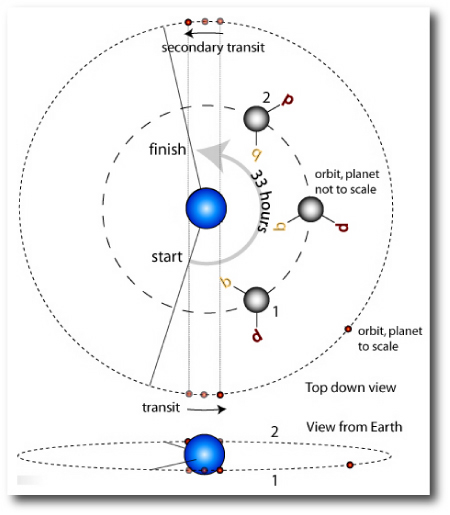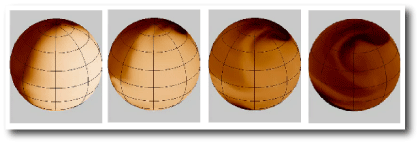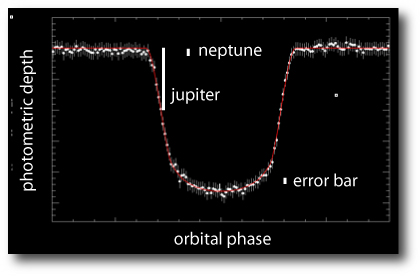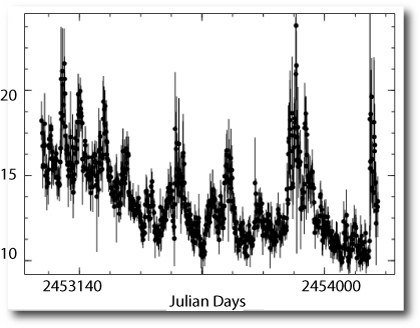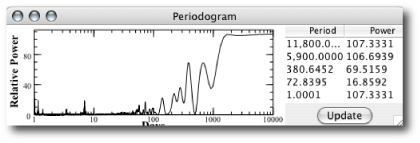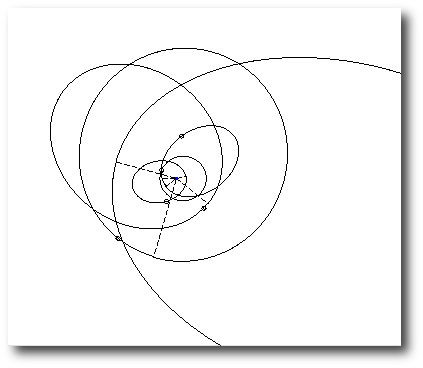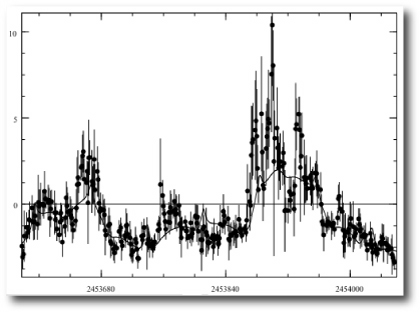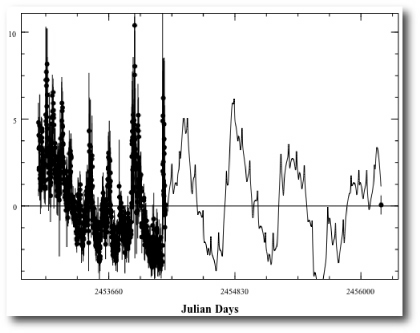
Image Source.
First, I squandered literally years of opportunity to coordinate a photometric follow-up transit search on Gl 436. Then I managed to incorrectly report the circumstances of the detection on the initial version of this (now corrected) oklo post! Naturally, I’m feeling sheepish, and my situation bears a distant echo to that of John Herschel (son of William), who was partly to blame for the inadequate coordination of an observational follow-up to John Couch Adams’ predictions of Neptune’s location.
Following the stunning news from the Continent of LeVerrier’s prediction and Galle’s successful detection of Neptune, Herschel likely realized at once that Neptune’s discovery would have gone to England had only he pressed Adams’ case more assiduously. In an October 1, 1846 letter to the London Athenaeum, Herschel hems and haws in a somewhat disingenuous effort to wriggle out of the uncomfortable situation that he had put himself in.
“The remarkable calculations of M. Le Verrier – which have pointed out, as now appears, nearly the true situation of the new planet, by resolving the inverse problem of the perturbations – if uncorroborated by repetition of the numerical calculations by another hand, or by independent investigation from another quarter, would hardly justify so strong an assurance as that conveyed by my expression above alluded to. But it was known to me, at that time, (I will take the liberty to cite the Astronomer Royal as my authority) that a similar investigation had been independently entered into, and a conclusion as to the situation of the new planet very nearly coincident with M. Le Verrier’s arrived at (in entire ignorance of his conclusions), by a young Cambridge mathematician, Mr. Adams; – who will, I hope, pardon this mention of his name.”
Herschel also wrote urgently to his friend William Lassell, a wealthy beer brewer from Liverpool, and a skilled observer who owned a fine 24-inch reflector. Herschel exhorted him to partially salvage the situation for himself and for Britain through a search for “satellites with all possible expedition!!”
Lassell began observing Neptune immediately, and within a week had spotted what was later confirmed to be Neptune’s satellite Triton. This, however, did little to assuage the court of British public opinion, and Challis, Airy, and Herschel were savaged for their inaction. “Oh, curse their narcotic Souls!” wrote Adam Sedgwick, professor of Geology at Trinity College.
[I culled these anecdotes from my favorite book on the topic of Neptune, Vulcan, LeVerrier and 19th-century dynamical astronomy; “In Search of Planet Vulcan — The Ghost in Newton’s Clockwork Universe” by Richard Baum and William Sheehan.]
Unfortunately, even with the exertion of all possible expedition, the detection of satellites orbiting Gl 436 b is a long shot. Large moons orbiting a planet only 0.02 AU from the parent star are almost certainly dynamically unstable (as shown here), and would, in any case, require exquisite photometry to detect. But one can, however, investigate the possibility that Gl 436 b might point the way toward other detectable planets in the system.
The first clue that Gl 436 might harbor more than one planet comes from planet b’s considerable, e~0.16, eccentricity. It’s surprising to find a P=2.644 day planet on a non-circular orbit. Given that its tidal quality factor, Q, is likely similar to Neptune’s, it should have circularized a long time ago — unless there’s a source of ongoing gravitational perturbation.
Gl 436 b’s high eccentricity means that, like Jupiter’s moon Io, it’s experiencing a lot of tidal heating. It’s internal luminosity is likely of order 10^20 Watts, which is in the rough ballpark of the amount of energy that the planet intercepts from the red dwarf parent star. Another interesting consequence of the non-zero eccentricity is that b will have a pseudo-synchronous spin period. That is, tidal forces will have forced the planet into a rotational period of 2.29 days, which allows it to optimally show one face to the star during periastron passage when the tidal forces are strongest. Jonathan Langton has done a simulation of the surface flow pattern (assuming a water-vapor atmosphere). The following 1.1MB animations (“eastern” view, and “western” view) trace two full orbits in the planet’s frame, and show the slow synodic drift of the baking daylit hemisphere.

If there’s a perturbing companion to Gl 436 b, then it’s a reasonable guess that it lies in roughly the same orbital plane, meaning that there’s a non-negligible chance of transit. It would certainly be nice if such a transit could be predicted in advance…
The first task is to look at whether the published radial velocity data set for Gl 436 gives any hint of additional planets. Going to the “Real Star” catalog on the systemic backend, and calling up the “gj436_M07K” dataset shows a wide variety of fits that have been submitted by systemic users over the past nine months:
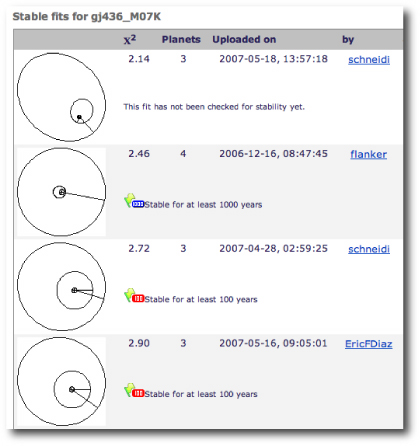
Unlike the case of Gl 581c, there’s no particularly compelling evidence for a second planet. In sifting through the various fits that have been submitted, one finds that a second planet with a mass similar to Uranus and a period of 53 days is probably the most likely candidate perturber, and using the console, I find an unpublishably high false-alarm probability of 49% for a planet “c” with these properties. (The discussion boards on the systemic backend indicate that the systemic users have also arrived at this conclusion.)
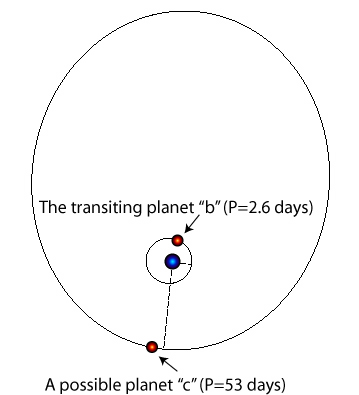
On the other hand, however, a coin-flip isn’t half-bad odds, and what better low-stakes venue than a blog for an analysis? Let’s go ahead and assume that the 53-day candidate is really there.
At the current time, the console software isn’t configured to incorporate transit information into radial velocity fits. In particular, when one has a transit, one gets (1) an excellent determination of the period, and (2) an accurate ephemeris of the moment when the transiting planet and the parent star both lie on the line of sight to the Earth. Condition (2) provides a constraint on the fit that replaces the transiting planet’s Mean Anomaly as a free parameter. I have a Fortran code (that I wrote for an analysis of the orbit of HD 209458b) that handles this situation, and so I can carry out a self-consistent two-planet fit that takes advantage of the transit ephemeris for b reported in the Gillon et al. paper. This 2-planet fit (based on the 53-day Uranus suggested by the fits submitted to the systemic backend) has a chi-square statistic of 3.09, and an RMS scatter of 3.91 m/s. The orbital parameters of the planets are: P_b=2.64385d, P_c=53.57724d, e_b=0.1375, e_c=0.2281, omega_b= 347.999 deg, omega_c=185.146 deg, M_b=0.0697 M_jup, and M_c=0.0417 M_jup. The Mean Anomaly of the putative planet “c” at JD 2451552.077 is 100.69 degrees.
One would certainly prefer to see a beefier perturber for Gl 436 b. When I compute the Laplace-Lagrange 2nd-order secular theory for the above system (including the effects of general relativistic precession) I find that b’s eccentricity cycles between e_min=0.135 and e_max=0.160 with a period of 13,000 years. This is much shorter than the time scale for orbital circularization, but it’s not immediately clear to me whether the secular perturbations from c would be able to maintain such a large eccentricity for b over billions of years. Does anyone know the answer offhand? That is, if b and c both formed with sizable eccentricities, would the secular interaction prevent circularization by providing c with a mechanism to offload angular momentum?
In any case, if c is for real, and if its orbital plane is properly aligned for central transits, then they will occur on (all times UT):
ingress JD: 2454152.02 2007, Feb 20, 12:34
egress JD: 2454152.19 2007, Feb 20, 16:29
ingress JD: 2454205.60 2007, April 15, 2:24
egress JD: 2454205.77 2007, April 15, 6:24
ingress JD: 2454259.18 2007, June 7, 16:14
egress JD: 2454259.34 2007, June 7, 20:14
ingress JD: 2454312.75 2007, July 31 06:04
egress JD: 2454312.92 2007, July 31 10:04
I’m now doing a more detailed analysis to see if c can maintain the observed eccentricity of b over the long term. If it’s a go, then I’ll run a bootstrap calculation to determine the probable error on the above predictions. It might be useful, however, to mark down June 6th-8th on the calendar.
